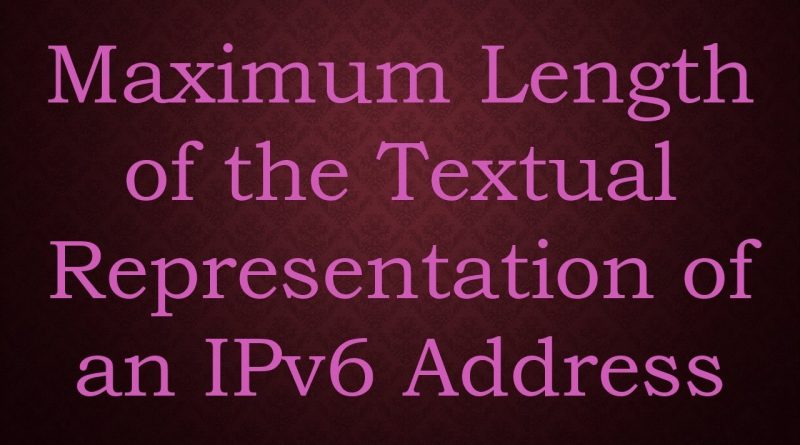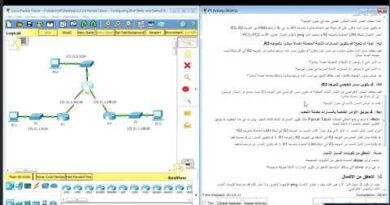Maximum Length of the Textual Representation of an IPv6 Address
Disclaimer/Disclosure: Some of the content was synthetically produced using various Generative AI (artificial intelligence) tools; so, there may be inaccuracies or misleading information present in the video. Please consider this before relying on the content to make any decisions or take any actions etc. If you still have any concerns, please feel free to write them in a comment. Thank you.
—
Summary: Discover the maximum length of the textual representation of an IPv6 address, including the structure, format, and variations that contribute to its length.
—
An IPv6 address is designed to accommodate the growing need for unique IP addresses, surpassing the limitations of its predecessor, IPv4. One aspect of understanding IPv6 addresses involves knowing their potential maximum length in textual representation.
Structure of an IPv6 Address
An IPv6 address consists of 128 bits, segmented into eight groups of 16 bits each. These groups are written as four hexadecimal digits and are separated by colons. A typical IPv6 address looks like this:
[[See Video to Reveal this Text or Code Snippet]]
Maximum Length Calculation
The maximum length of an IPv6 address in its full form can be calculated as follows:
Each hexadecimal digit represents 4 bits, and with 16 bits per segment, each segment has 4 hexadecimal digits.
There are eight segments in total, leading to 8 segments * 4 digits = 32 hexadecimal digits.
Each segment is separated by a colon, and with 7 colons in an address, we add 7 more characters.
Thus, the total length is 32 digits + 7 colons = 39 characters.
Special Cases and Compression
IPv6 addresses can be abbreviated using two compression methods:
Leading Zero Suppression: Leading zeros in any segment can be omitted. For example, 2001:0db8:0000:0042:0000:8a2e:0370:7334 can be shortened to 2001:db8:0:42:0:8a2e:370:7334.
Zero Compression: Consecutive segments of zeros can be replaced by a double colon ::. This can only be done once in an address to avoid ambiguity. For example, 2001:0db8:0000:0000:0000:0000:0000:0001 can be compressed to 2001:db8::1.
While these compressions reduce the length of an IPv6 address for convenience, they do not change the potential maximum length when considering the full, uncompressed format.
Maximum Length in Mixed Form
IPv6 also supports embedding an IPv4 address within it, known as an IPv4-mapped IPv6 address. For instance:
[[See Video to Reveal this Text or Code Snippet]]
In this case, the maximum length calculation includes:
::ffff: (7 characters)
The IPv4 address (192.168.1.1), which is 11 characters.
Thus, the maximum length of an IPv4-mapped IPv6 address is 18 characters.
Conclusion
The maximum length of the textual representation of an IPv6 address in its full form is 39 characters. However, due to possible compressions and special cases, the actual representation can be shorter, enhancing readability and usability. Understanding these variations is crucial for effectively working with IPv6 addresses in network configurations and applications.
ipv4



